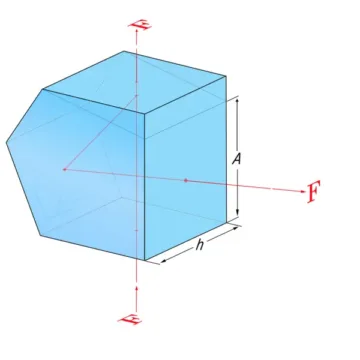-
A Double Concave Lenses is nothing more than a biconcave lens with concave surfaces on both sides. Double-Concave Lenses are designed for applications such as beam expansion, image reduction, and light projection. Additionally, these lenses are excellent for increasing the focal length of an optical system.
-
Meniscus lens is a lens that has two curved spherical surfaces, one convex and the other concave. Around the middle, the meniscus lens is thicker than at the sides. Thus, with a rising beam waist and spherical aberration, the lens has a smaller beam diameter. When a meniscus lens is paired with another lens it shortens the focal length and increases the system's numerical aperture. This decreases the distortion of the image and increases the resolution of the image.
-
An Aspheric Lens is one whose surface profiles do not resemble those of a sphere or cylinder. In comparison to a basic lens, Aspherical Lens can reduce or eliminate spherical aberration and also other optical distortions such as astigmatism. Main Applications of Our Aspherical Lens: - Collimator or condenser of the light source. - Collimator of laser. - Coupling lens to focus laser into an optical fiber. - Imaging
-
A special type of thick biconvex optical lens is a Ball lenses that usually has a sphere geometric shape. These are made of a single material such as BK7 or other optical glass/Fused Silica/CaF2 which is a commonly used material for ball lenses. The smallest lens we produced is < 0.5 mm. We can process ball lenses using all types of glass material. Our price for PV industry may be as low as USD0.02/pcs. We are developing CSD-based AR-coating to provide a low-cost PV-coating solution.
-
Beamsplitter Penta Prism is produced by bringing together a precision Penta Prism and a wedge prism and adding an appropriate interference coating to one of the typically reflective surfaces. Since minor motions of a Penta Prism do not influence the true right angle at which light rays are reflected, the difference between the light rays transmitted and reflected is highly controllable
-
Brewster Windows are windows that are meant to be used at Brewster's angle (usually uncoated). This is the angle at which only incident p-polarized light has 0% transmission loss. Instead of exterior mirrors, a Brewster window is an uncoated substrate positioned at Brewster's angle within a laser. This substrate works as a polarizer, allowing p-polarized light to enter and exit the window without reflection losses while reflecting s-polarized light. Features
- Perfect for Laser Cavities.
- A substrate with UV Fused Silica.
- Without Reflection Losses, P-Polarized Light is Transmitted.
-
Calcium Fluoride (CaF2) Windows have a high damage threshold and low absorption and are transparent from 180 nm to 8µm. It is a great choice for FTIR analysis, excimer laser systems, spectroscopic windows, and thermal imaging systems. Features:
- <1 arc-minute parallelism
- Ideally suited for excimer laser applications.
- Transparent in UV, visible, and infrared light.
- A low absorption rate and a high damage threshold
- In comparison to other IR materials, it has a low chromatic aberration.
-
- Z-OPTICS has big catalog of cylindrical lens off-the-shelf for quick delivery and provides quick sampling service for new drawings.
- Multiplicity of materials, Glass, Fused Silica, Sapphire, CaF2, ZnSe ….
- Innovative low cost plano convex cylindrical lens is available.
Overview
- Ready Stock: Z-Optics offers a large catalog of cylindrical lenses available for fast delivery and custom sampling for your unique designs.
- Material Multiplicity: Select from premium optical glass, fused silica, sapphire, CaF2, ZnSe, and more—a solution for every requirement.
- Cost-Effective Options: Innovative low-cost plano convex cylindrical lenses and specialized shapes for demanding optical applications.
-
Dove prisms are reflective prisms that are used to invert images. A truncated right-angle prism is used to build dove prisms. Roof prisms are commonly used in optical equipment like digital optoelectric products, imaging equipment, fingerprint systems, medical devices, precise digital control machinery and other optical fields, common science educational equipment, optical communication, etc.
-
All sides of an Equilateral Prism are the same length. This also implies that they have three 60-degree angles. They are beneficial in wavelength separation applications. They are also often used to refract light. This refraction demonstrates that white light is a blend of all the colours in the spectrum.












